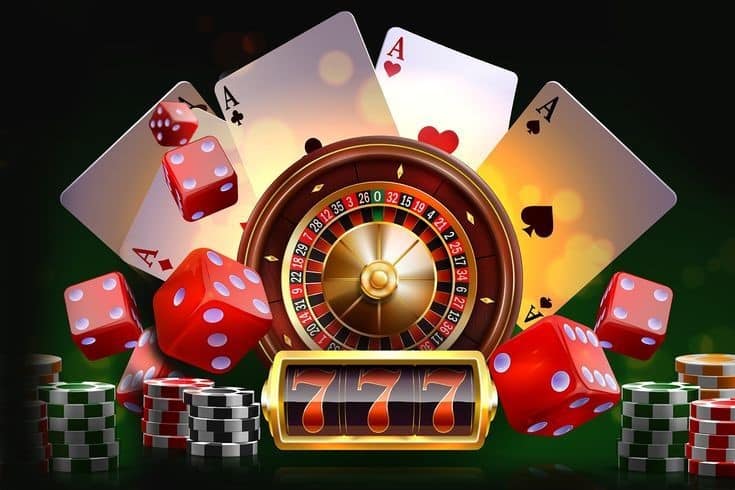The manner in which Casino Games Employ Hue and Style to Entice Gamers

Within a vibrant and thrilling world of gaming establishments, wherein fortune and strategy intertwine, color and aesthetic play a pivotal role in drawing in gamblers. From the moment visitors step into a casino or access a gaming platform, they are enveloped in a sightly feast that grabs their attention and lures them to explore more. Vivid colors, engaging graphics, and creative layouts are meticulously crafted to create an environment of excitement and anticipation, ultimately enhancing the gaming experience. FB88
As players navigate through the dynamic landscape of casino games, they encounter a range of designs that not only serve aesthetic purposes but also influence feelings and choices. Colors like scarlet and gold symbolize wealth and luck, while soothing navy and emeralds can create a much tranquil environment. Grasping how these elements work together enables casinos to create an welcoming and stimulating atmosphere that encourages players to interact with the games, spend additional time at the tables, and increase their general enjoyment.
The Science of Tint in Casino Games
Hue plays a key role in the development of gambling games, affecting players’ emotional states and actions. Bright and vibrant hues, such as crimson and gold, are often used to incite excitement and capture notice. These shades create a sense pressure and energy, encouraging players to participate more eagerly with the game. By strategically selecting tints, developers aim to inspire emotions of pleasure and anticipation, which can enhance the total game experience.
Various colors also have psychological meanings that can impact how players perceive their odds of winning. For case, lime is commonly associated with fortune and wealth, making it a well-liked choice in activities like roulette and poker games. This association can lead gamblers to feel more positive and confident in their gaming, ultimately motivating them to bet more. Understanding these associations allows game creators to create environments that enhance player enjoyment and retention.
Moreover, the interface of gambling game interfaces often employs color gradients and contrasting hues to instruct players’ actions. For example, winning combinations may be highlighted with striking, opposing shades, creating a visual reward. This method reinforces favorable outcomes and encourages repeated participation. By leveraging the science of color, casinos can create games that not only captivate players but also maintain them interested and invested in their play experience.
Design Features that Engage Gamers
The aesthetic appeal of casino games is largely influenced by the use of bold colors. Lively and contrasting colors are deliberately chosen to create an inviting atmosphere that grabs interest. For instance, crimson and golds often signify good fortune and wealth, which is why they are common in the palettes of gaming machines and table surfaces. These colors not only attract players in, but they also stir emotions related to excitement and anticipation, enhancing the overall gaming experience.
In parallel to color, the aesthetic and layout of casino games play a crucial role in captivating players. Games are designed to be user-friendly, ensuring that players can quickly understand the rules and mechanics. Accessible interfaces, along with captivating graphics and motion, help maintain gamer interest and encourage extended play sessions. The tactile elements, such as the texture of the controls and the audio of the games, also add to a comprehensive sensory experience that keeps players engaged.
Finally, thematic elements in gaming design can significantly influence gaming decisions. Many gambling games are inspired by popular culture, myths, or exploration motifs, incorporating symbols and characters that connect with players. These themes create a sense of engagement and connection, making each game feel distinct. When players feel a bond to the concept, they are more likely to opt for that game over others, leading to increased participation and enthusiasm within the casino environment.
Case Studies: Successful Casino Slot Designs
One key example of successful gambling game design is the acclaimed slot machine series themed around blockbuster movies. FB88 Games such as those based on the Wizard of Oz and Game of thrones utilize dynamic colors and high-quality graphics to engage players in well-known narratives. The employment of moving visuals and entertaining sound effects captures the attention of players, building an emotional connection to the theme. This strategy not only promotes longer play but also enhances the overall gaming experience, yielding increased player retention.
Another successful case is the application of color in table games like 21 and the wheel. Casinos often create these games with rich reds and greens, colors traditionally connected with luck and wealth. For instance, the green felt on a 21 table provides a relaxing effect, while the crimson accents in roulette invite anticipation. This thoughtful use of color helps to establish an inviting atmosphere that motivates players to participate, fulfilling their psychological impulses and increasing their enjoyment.
Finally, social casino games that incorporate social features and vivid, dynamic designs have seen remarkable success in engaging players. Games like Zynga’s Poker and Slot-O-Mania leverage vivid colors and playful animations to create an inviting online environment. The addition of leaderboards, community sharing options, and in-game rewards fosters competition and community, attracting players in for longer sessions. Such designs merely make the games visually attractive but also emphasize community engagement, a key factor in player retention and engagement within online casino environments.
